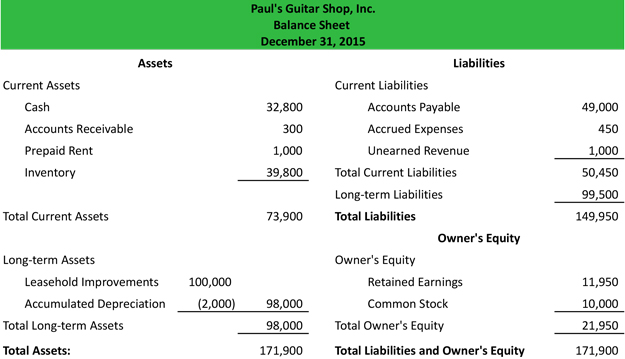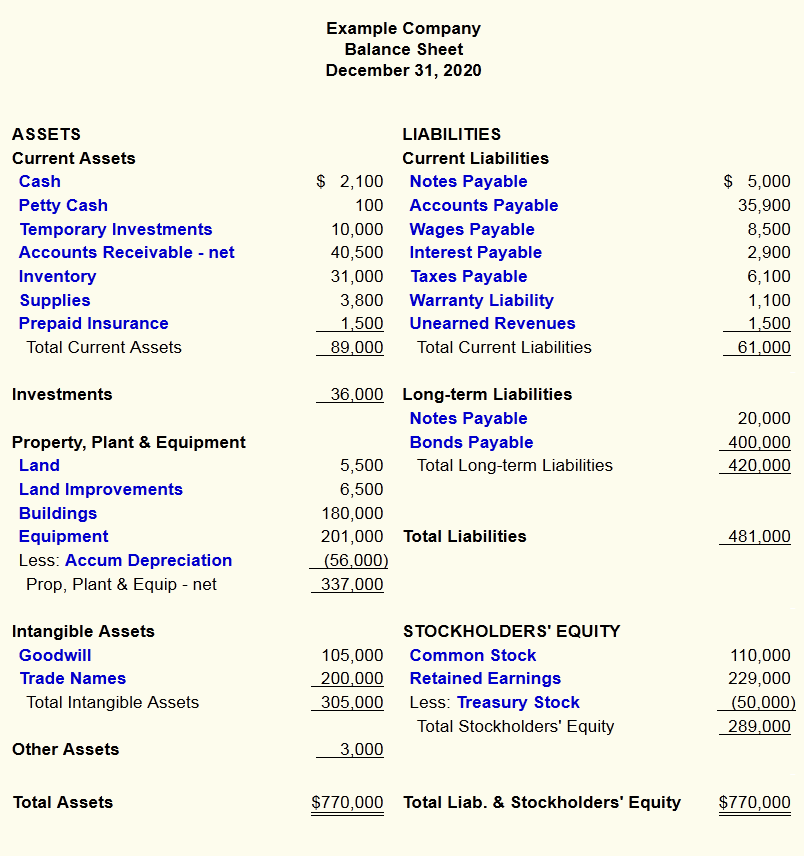
The mostly adopted approach is to divide assets into current assets and non-current assets. Current assets include cash and all assets that can be converted into cash or are expected to be consumed within a short period of time – usually one year. Examples of current assets include cash, cash equivalents, accounts receivable, prepaid expenses, advance payments, short-term investments, and inventories. A balance sheet serves as reference documents for investors and other stakeholders to get an idea of the financial health of an organization. It enables them to compare current assets and liabilities to determine the business’s liquidity, or calculate the rate at which the company generates returns.
The balance sheet equation
Understanding the investment, financing and operating cycles is essential for assessing a company’s financial health. They shed light on the way it finances its investments and manages its day-to-day operations, aspects that are fundamental to financial strategy. To put it trivially, the further down you go in the list of uses, the quicker the money is available.
Liabilities Section
The report provides helpful information when assessing a company’s financial stability. Financial ratios are used to calculate the business’s financial position, including liquidity and gearing ratios. Banks and suppliers use them to determine if they can offer a loan, overdraft or credit facility. Suppose Company B has total liabilities of 1 million dollar and shareholders’ equity of 500,000 dollars, resulting in a debt-to-equity ratio of 2.0.

Activity Ratios
The balance sheet is essentially a picture a company’s recourses, debts, and ownership on a given day. This is why the balance sheet is sometimes considered less reliable or less telling of a company’s current financial category:computer file systems wikipedia performance than a profit and loss statement. Annual income statements look at performance over the course of 12 months, where as, the statement of financial position only focuses on the financial position of one day.
- The image below is an example of a comparative balance sheet of Apple, Inc.
- The company then begins to depreciate ( or reduce in value) the asset over time.
- A company receives assets such as cash when selling a product or service, or even by selling shares of its own stock or issuing bonds.
- On the bank’s balance sheet, your money is a liability because the bank has to give it to you upon request.
- Balance Sheets include assets, liabilities, and shareholders’ equity.
Liabilities
This means that the balance sheet should always balance, hence the name. If they don’t balance, there may be some problems, including incorrect or misplaced data, inventory or exchange rate errors, or miscalculations. The NERF measures available stable resources after financing fixed assets. A negative NERF, on the other hand, suggests a potential financial risk requiring corrective measures such as a capital increase or recourse to long-term debt. It shows in one place how much the business owns (assets) and owes (liabilities).
Format
It records any money borrowed or loaned by the director to the business, as well as any personal expenses paid for by the company on behalf of the director. It can be an asset or a liability, depending on whether the business owes or is owed the money. This includes money owed on a mortgage or loan and lease payments. As a small business, it’s crucial to maintain a fixed asset register.
Get free guides, articles, tools and calculators to help you navigate the financial side of your business with ease. Ask a question about your financial situation providing as much detail as possible. Your information is kept secure and not shared unless you specify.
Generally speaking, balance sheets are instrumental in determining the overall financial position of the business. A company’s balance sheet provides important information on a company’s worth, broken down into assets, liabilities, and equity. Investors can gain valuable insight from this financial statement since it shows a company’s resources and how it is funded to evaluate its financial health. Furthermore, the balance sheet is a key source for analyzing the various performance metrics of a company, such as its return on assets ratio, debt-to-equity (D/E) ratio, and liquidity ratio. Although the balance sheet is an invaluable piece of information for investors and analysts, there are some drawbacks. For this reason, a balance alone may not paint the full picture of a company’s financial health.
A company will be able to quickly assess whether it has borrowed too much money, whether the assets it owns are not liquid enough, or whether it has enough cash on hand to meet current demands. When analyzing a company’s liquidity, the current ratio and quick ratio are essential indicators. If the company’s inventory is 100,000 dollars, the , showing the company’s ability to meet obligations without depending heavily on inventory. This analysis is crucial in assessing short-term financial stability, especially in industries with fluctuating demand cycles. The components of a balance sheet include assets, liabilities, and shareholder equity. By understanding each part of the balance sheet, you can provide the most in-depth analysis.
Because of this, managers have some ability to game the numbers to look more favorable. Pay attention to the balance sheet’s footnotes in order to determine which systems are being used in their accounting and to look out for red flags. Regardless of the size of a company or industry in which it operates, there are many benefits of reading, analyzing, and understanding its balance sheet. Some companies issue preferred stock, which will be listed separately from common stock under this section.
When a balance sheet is prepared, the current assets are listed first and non-current assets are listed later. According to the equation, a company pays for what it owns (assets) by borrowing money as a service (liabilities) or taking from the shareholders or investors (equity). These financial statements are also key for calculating rates of return for your investors and for evaluating the capital structure of your business, both of which are essential processes. As you can see, the report form presents the assets at the top of the balance sheet.








Recent Comments